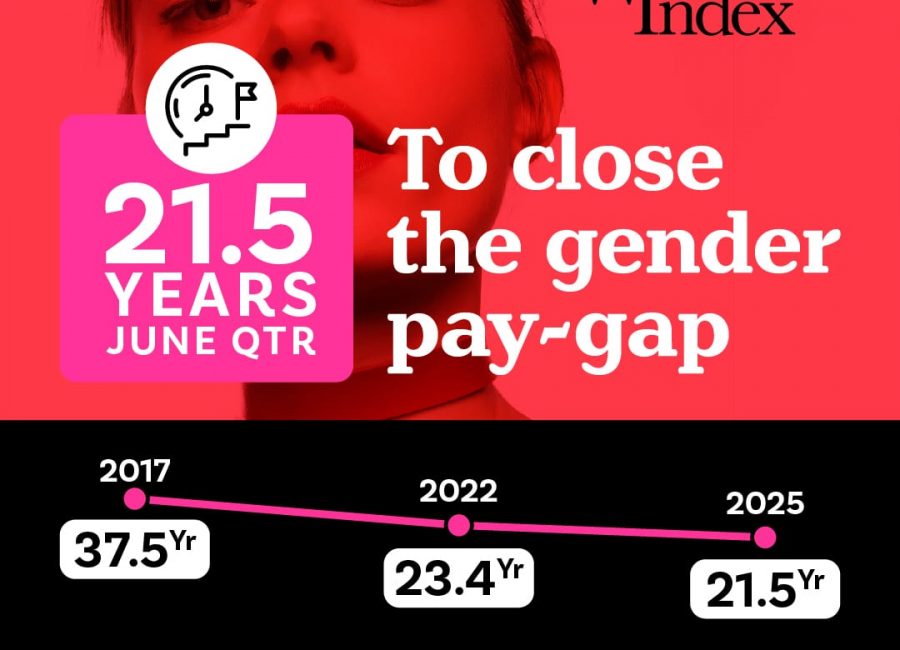The Federal Budget 2021 talked to women for the first time in decades but only because it had to and not because the government has any grand strategy to achieve gender equality in Australia in the near future.
What’s clear from the Treasurer’s Budget speech is that women matter more than they did six months ago – when the last Budget was handed down – and well before media storm erupted on fresh allegations of sexual violence against women by government ministers and staff.
But what’s missing is a strategy. If this were a defence spending Federal Budget, we might have Operation Protect Australia or something. What we need is Operation Achieve Gender Equality by 2030.
“There was a lot in this Federal Budget and for women some of it was a good step in the right direction but there was no overarching strategic plan to tackle gender equality,” said Nicki Hutley economist at Social Outcomes.
“The government’s budget announcement on superannuation was a classic example of this where the government could have delivered a change like providing super on paid parental leave which would have really helped women and to close the gender gap in retirement savings, but instead it went for the smaller option of abolishing the super guarantee threshold of $450 a month.”
Just like Climate Change, this government lacks real a plan and many of the measures that have been announced are aimed more at fixing women or women’s behaviours around work, than they are about challenging systemic gender issues.
So here’s what we know: The big ticket spending items aimed at improving women’s economic security and reducing gender disparities include a focus on the following as listed in the Women’s Budget Statement.
- $1.7 billion over five years via the Child Care Subsidy to support families with multiple young children who face some of the highest workforce disincentives.
- Initiatives to challenge gender stereotypes in the workforce and assist women into a greater array of industries and occupations, including:
- $42.4 million over seven years from 2021-22 to establish the Boosting the Next Generation of Women in Science, Technology, Engineering and Mathematics (STEM).
- $38.3 million over five years from 2021-22 to increase grant funding available through the Women’s Leadership and Development Program
- $13.9 million over four years from 2021-22 to establish an Early Stage Social Enterprise Foundation focused on providing capacity building and financial support for early stage social enterprises that improve the safety and economic security of Indigenous women.
- Programs that support women’s career choices
- $12.2 million over two years from 2021-22 to fund an additional round of the National Careers Institute Partnership Grants program to support projects that facilitate career opportunities and career pathways for women.
- $2.6 million over three years from 2021-22 to expand the Career Revive program to support more medium to large regional businesses attract and retain women returning to work after a career break.
- Changes to superannuation. The removal of the $450 threshold for the employer superannuation guarantee.
- A pathway to home ownership for 10,000 single parent households.
- About $1 billion to be spent on various measures to address domestic violence against women and children including more funding for front line support services, family law changes and financial support to escape abuse. Of that the measures include:
- $10.7 million over two years from 2021-22 to extend the family law small claims property pilot and Legal Aid Commission family law property mediation trial for settlement of property of less than $500,000 following a relationship breakdown.
- $261.4 million over two years from 2021-22 to establish a new National Partnership with the states and territories to expand the funding of frontline FDSV support services.
- $164.8 million over three years from 2021-22 for a two year trial program to provide financial support of up to $5,000 to women fleeing a violent relationship.
- $29.3 million over three years from 2021-22 to support refugee women and other migrant women’s safety and social economic inclusion.
The big question is to what extent will the major Budget announcements that are directed at women, actually move the dial on the 101 year timeframe to Australia achieving gender financial equality as measured by the Financy Women’s Index. My prediction is yes it will move the dial, but it will still be slow, hence my frustration at the lack of overarching strategy on gender equality.
The top 3 Federal Budget fixes/fails “targeted” at women.
Childcare reforms
Budget announcement: The government announced a week before the Budget that it would make a new $1.7 billion investment in childcare that will provide additional support to around 250,000 families.
About half of these families have an income of less than $130,000. There are two key changes.
First, the current $10,560 cap on the childcare subsidy will be removed.
Second, families with two or more children aged 5 and under will receive a 30 per cent increase in the subsidy for their second and subsequent children up to a maximum of 95 per cent of fees paid.
The government’s focus remains on supporting low and middle income families, with the tapering rate applying between incomes of $69,390 and $353,680. This targeted and proportionate investment is designed to give parents who choose to work more hours or more days the opportunity to do so.
Gender problem: Women do about 61% more unpaid work than men, including primary caring for children. The amount of time spent on unpaid work acts as a barrier for women’s paid work participation.
As it stands, there is a workplace disincentive rate for women to work more than two to three days per week because of the high costs of childcare. What this means is that when women do t he math they don’t feel it is financially worth it for their family for them to go to work outside of the home. This has flow on effects for women as it reduces their wages and superannuation and long-term financial security relative to men.
Gender fix or fail? This is a step in the right direction but helping only 250,000 additional families when there are nearly 6 million women in the paid workforce, many of which have children, shows that this measure is like a drop in the ocean. I would still like to see this reform benefit millions of families.
Superannuation changes
Budget announcement:
The government will abolish the $450 a month threshold to pay compulsory super in the 2021 federal budget, boosting the retirement incomes of thousands of part-time workers and mums.
Gender problem: Women retire with about 30% less superannuation savings than men on average, according to the Financy Women’s Index.
Gender fix or fail? This is a step in the right direction and a much needed one. More like this will certainly help women to narrow the gender gap in retirement savings. But I still maintain that greater benefits to women will come from ensuring that superannuation is also paid on parental leave.
Tax changes to benefit women
Budget announcement:
The JobSeeker payment will be increased by $50 a fortnight for almost two million Australians, many of whom are women, but their obligations to actively seek work will also increase too.
The budget will also offer one-off tax relief worth $1080 to low and middle income earners – most of whom are women and younger Australians.
Gender problem: Women earn about 13.4% less than men on average per week.
Gender fix or fail? This measure isn’t direct enough. We need measures that specifically help to boost the wages of women relative to men particularly in sectors with significant gender gaps such as health – which is heavily female dominated.
Join the Financy social communities that support achieving fearless economic equality on LinkedIn and Facebook or follow our official pages on LinkedIn, Facebook, Instagram and Twitter.












